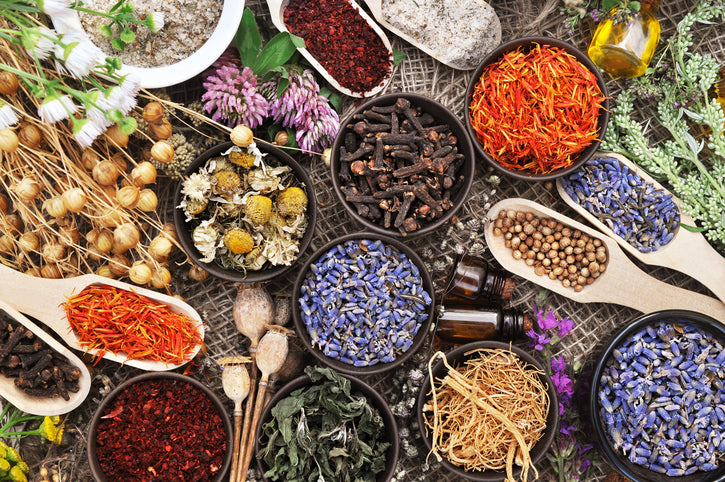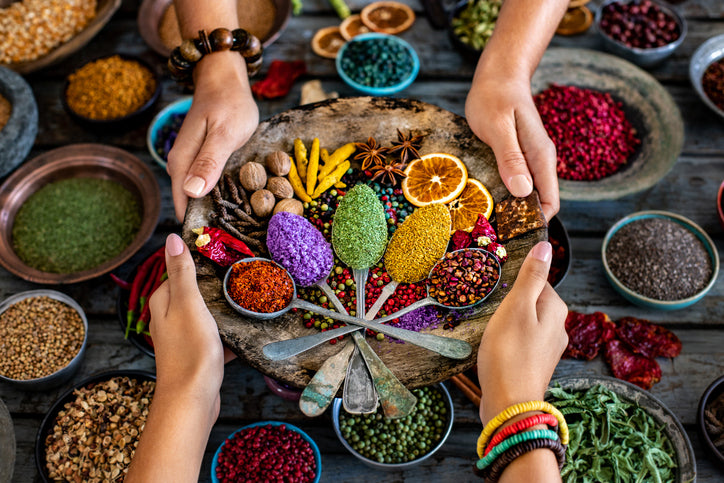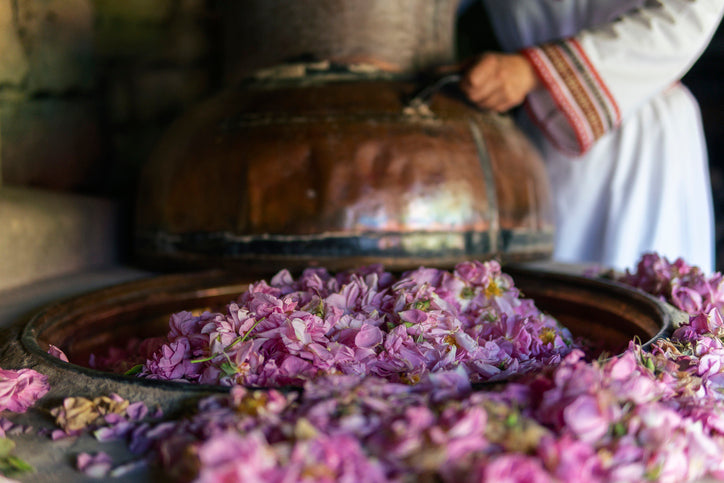
House-made extractions & free of essential oils!
You’ll find the majority of tallow skincare brands using essential oils in their products as opposed to whole plant infusions. We choose to only use whole plant infusions and house made extracts. This offers a wider array of herbal constituents, making our products more effective yet gentle enough to use on little ones.
Why do we prefer whole plant infusions over essential oils?
There is a lot of misconception around the use of essential oils. Many people believe that because essential oils are natural that they must be good for us. However, just because something is natural doesn’t mean it is good for us.
Here’s a reminder that there are zero regulations regarding the production of essential oils. Did you know that many are considered hazardous under federal regulation? They are classified as cosmetics and many contain over 200 chemicals that are not listed! It’s also not required for these businesses to disclose the ingredients (aka chemicals) that they contain. These Essential oils are only one of a plant’s constituents. The rest are thrown away by large corporations. Why would we throw away such beneficial plant matter? Simply put, there’s billions to be made off the EO industry.
For every essential oil, there is an actual herb that contains all of its constituents. That is why we choose to use whole plant matter and hydrosols in our shop!
Not only is the production of EOs extremely unsustainable but one of my biggest concerns are the side effects and hazard statements that these companies do a great job of hiding. While I am purposefully not going to name these specific multi-million dollar companies that have deceived so many. I do recommend diving deeper into the safety data sheets that many essential oil companies make difficult to find on their websites. It’s definitely a rabbit hole that many are hesitant to explore because essential oils have been associated with the word “natural.”
There are specific signal words assigned to each essential oil. Many of those signal words are: “Danger.” Following the hazard statements you’ll find a long list of precautionary statements and dangers that include: “impaired breathing. Causes serious eye damage. May be fatal if swallowed and enters airways. May be harmful if swallowed. Etc.”
Now a lot of people may get stuck on the idea that not all essential oils are created equally and that there are many which are “less or more pure” than others. While many companies may add additional chemical compounds to their EOs, it does not make the “more pure” essential oils any less harmful with their naturally occurring volatile organic compounds (VOCs). All essentials are created the same way, regardless of where they are produced, whether that is at home with a copper still or produced at a mass scale for industrial use.
I highly suggest anyone looking to dive deeper into the world of essential oils to read April Graham’s book Essentially Deadly. Regardless of your current stance on EOs, April dives deep into the corruption of well known EO companies, the chemical compounds that make up different EOs, along with so much more valuable knowledge on the subject.
All of our wild harvested herbs are dried slowly, without being exposed to extreme temperatures or light so that they remain potent and vibrant even when dehydrated. We use folk methods of preparation and many of our methods of extraction have been self taught working with different plants and their properties. I’ve found that not everything is one size fits all when it comes to herbal preparations. Throughout the years I’ve studied what works and what doesn’t and how to adjust course from there.

Copper Distillation

What are hydrosols?
Hydrosols are distilled plant matter. They are the water based constituents of a plant. They have similar properties to essential oils but much less concentrated with softer, more subtle aromas. They are gentle enough to use on little ones and do not contain the dangerous side effects that nearly all essential oils do.
All of our hydrosols are produced on our homestead with a copper still. This allows me full control over the freshness and potency of each herbal extraction. When producing hydrosols, there are many factors that come into play like fresh or dried plant matter, the amount of time the plants are distilled, the equipment used and heat factors. All of these will have an effect on the over potency and quality of the distillation process.
Are essential oils produced during the distillation process?
Yes and no! In order to produce essential oils during the distillation process you have to distill a TON of plant matter! More often than not, essential oils are not produced at the rate we distill because we aren’t producing hydrosols at a large industrial scale. Additionally, each herb produces a different amount of essential oils during a given time. Plants that are higher in volatile organic compounds will produce more essential oils than those that contain less VOCs. To give you an example, when I distill a pound of lavender it may take 8-12 hours and produce around 10 drops of essential oil. Compared to distilling a pound of marshmallow root, which has much less VOCs than lavender, for 8-12 hours, it may not produce a single drop of EOs at all.
Is it “bad” for hydrosols to contain essential oils?
When a plant’s constituents aren’t isolated they work harmoniously to promote beneficial healing. It becomes an issue when constituents are isolated and become highly concentrated. We choose not to separate the essential oils that are produced during the distillation process to make for the most balanced and effective hydrosols.
